Writing Teaching Resources
Teaching writing strategies and the writing process this school year? Explore a comprehensive collection of teacher resources for primary English teachers — all created by teachers!
Stocked with graphic organisers, writing prompts, templates, worksheets and so much more, this collection of printable and digital activities is designed to help you as you help your students become more effective communicators and unleash their creativity and imagination.
Save time on lesson planning with resources that are aligned with the Australian curriculum (including version 9!) and have been through a careful review process by an expert member of our teacher team to ensure they're ready for your classroom and your students!
Are you looking for tips and tricks to add to your teacher toolkit this school year? Read on for a primer from our teacher team, including engaging activities for teaching writing inprimary school and a look at some of the different writing strategies your students will need to learn.
11 Writing Strategies Kids Should Know by the End of Primary School
We can't talk about teaching kids to write without talking about the different writing strategies that can help them do just that!
When it comes to teaching our students to become confident writers who articulate their ideas effectively, here are some of the strategies our teacher team prioritises:
1. Brainstorming
Brainstorming is something we often do in the classroom, and it's a crucial part of learning to generate the ideas that will drive students' writing as they progress through their educational journey. Kids should know how to create a list of potential topics or points related to a particular writing assignment.
With younger students, this is often done as a whole group by writing ideas and points on chart paper. In upper years, students transition over to using text-based materials to generate ideas and talking points.
2. Outlining
Before diving directly into any assignment, our students should be able to create a structured framework or outline. Teaching students how to create this outline will help them organise their thoughts and arguments for penning their essays, reports and research papers.

3. Using Graphic Organisers
Technically graphic organisers are classroom tools, so you may not think of their use as a writing strategy per se. However, learning to use these tools is another means of providing kids with the tools they need to organize their ideas and information before they sit down to write.
These organisers are particularly useful for expository writing — students can use them to outline main ideas, supporting details, and transitions.
Students can also take advantage of story maps when they are working on narrative writing to plot the key elements of a story, such as characters, setting, conflict, rising action, climax and resolution.
Graphic organisers such as the OREO strategy and hamburger paragraph are also great tools for students to use when working with opinion and persuasive texts.
4. Freewriting
Writer's block is the enemy of creativity, and it can easily frustrate young students who don't know where to begin.
When students freewrite, they write continuously without worrying about grammar or punctuation. This writing strategy can be extremely freeing — hence the name! — and helps frustrated writers move past that writer's block, generating fresh ideas.

5. Peer Editing
Learning to review and provide constructive feedback on each other's work is a great writing strategy to employ in your classroom to help students improve their writing quality and enhance their editing skills.
The strategy allows your students to learn from one another, and it arms them with an important tool they can use well into the future — calling on peers to provide a critical eye to a piece of writing.
6. Using Sensory Language
Working on descriptive writing? With this writing strategy, students engage the reader's senses through vivid and sensory language to create a more immersive experience.
7. Including Transitions and Connectives
As students become more proficient in the writing process, learning to use transitional words and phrases allows them to create smooth transitions between sentences and paragraphs. This strategy makes their writing more coherent and polished.
8. Incorporating Evidence
In persuasive, opinion and expository writing, students are taught to support their claims with evidence and examples to strengthen their arguments.
It takes some practice to train your students to use evidence in their writing, so it's often a good idea to start with something simple, like the R.A.C.E.S. strategy.
9. Crafting a Thesis Statement
In expository, opinion and persuasive writing, crafting clear and concise thesis statements that summarise the main point or argument of their essay helps students be more focused and organised in their writing.
This strategy can also have the effect of empowering students to express their ideas confidently and persuasively.
10. Incorporating Introductions and Conclusions
With this strategy, students practice crafting effective introductions and conclusions that grab the reader's attention and leave a lasting impression.
11. Following a Revision Checklist
Teaching your students to use a revision checklist is a strategy that will help them be more self-reflective, evaluating their own writing against the checklist criteria and becoming more aware of their strengths and weaknesses.

- Plus Plan
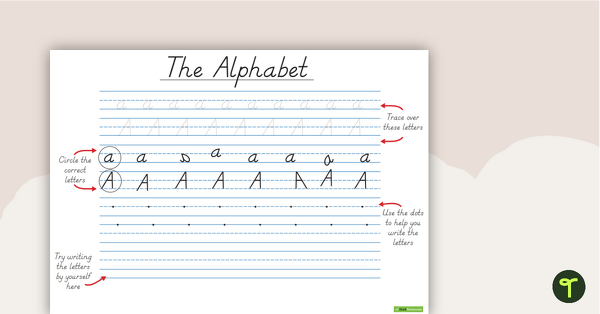
Alphabet Handwriting Sheets - Including Non-Examples
Handwriting sheets with opportunities for students to trace, identify and write the letters of the alphabet.
- Plus Plan
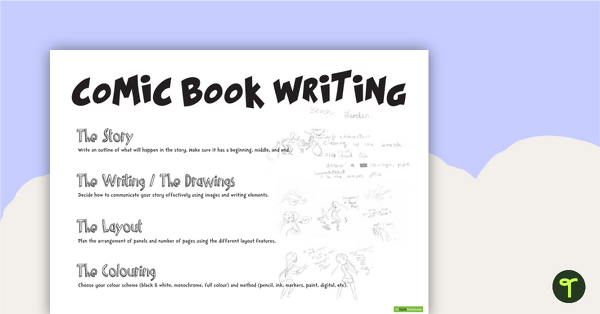
Comic Book Writing Resource Pack
9 pages of resources for creating comic books.
- Plus Plan
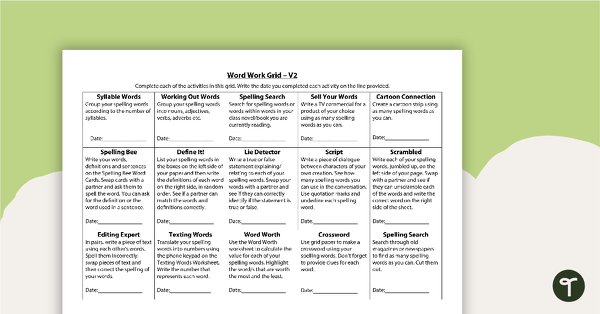
Word Work Grid and Worksheets - Version 2
A grid with spelling activities and corresponding worksheets.
- Plus Plan
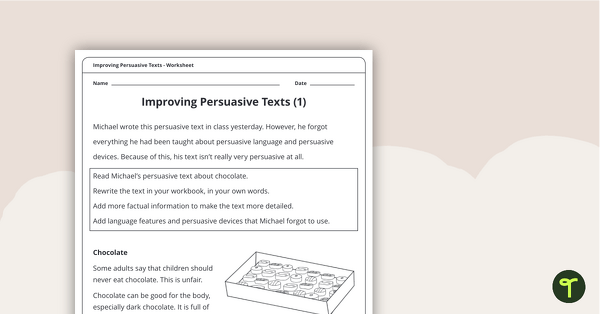
Improving Persuasive Texts Worksheets
3 pieces of text for students to rewrite in order to make them more persuasive.
- Plus Plan
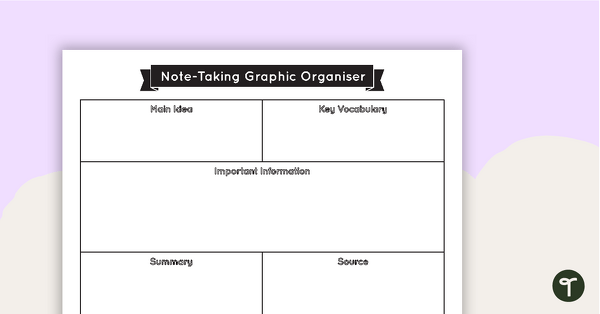
Note Taking Graphic Organiser
A graphic organiser for students to use when recording research notes.
- Plus Plan

Exploring and Building Narrative Characters PowerPoint
A 14 slide editable PowerPoint template to use when teaching younger students about how to build a character for a narrative text.
- Plus Plan
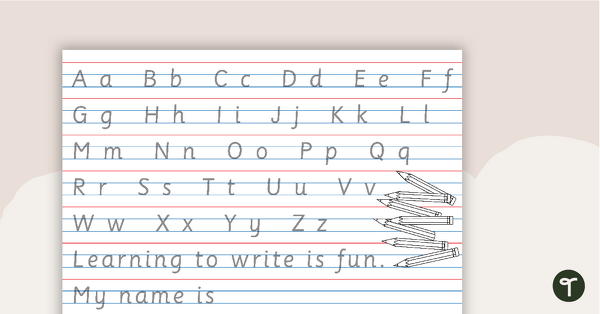
Alphabet Handwriting Sheet - 1 Page
Handwriting sheets with the alphabet and some words for students to trace.
- Plus Plan
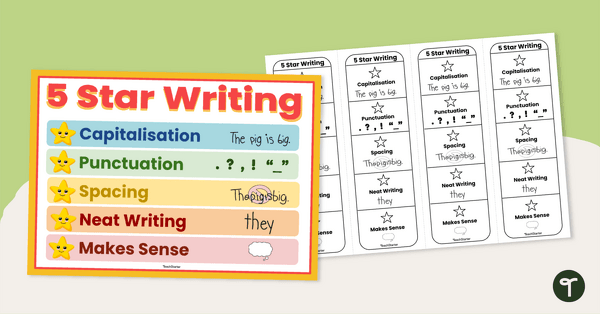
5 Star Writing Poster and Bookmark Set
Share this 5 star writing poster and bookmark set with your students to remind them how to be "star" writers.
- Plus Plan
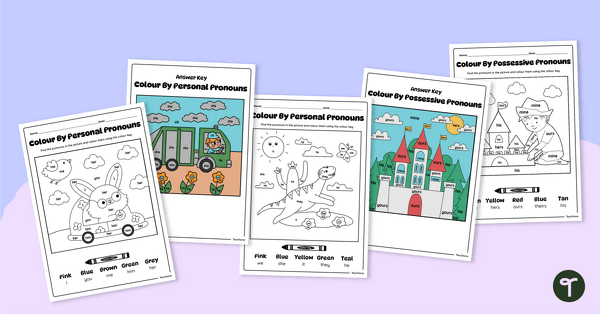
Colour by Pronouns Worksheet Pack
Use this set of colour-by-pronouns worksheets to help your students learn these important parts of speech.
- Plus Plan
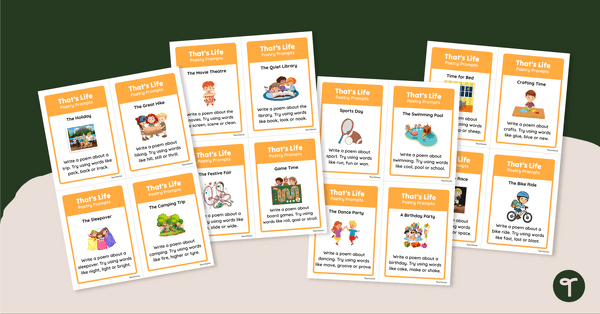
Life Event Poetry Prompt Task Cards
Use these poetry prompts to help your students write simple poems about their life experiences.
- Plus Plan

Handwriting Rhyme Poster
Use this handwriting rhyme to help your students prepare themselves for a handwriting lesson.
- Plus Plan
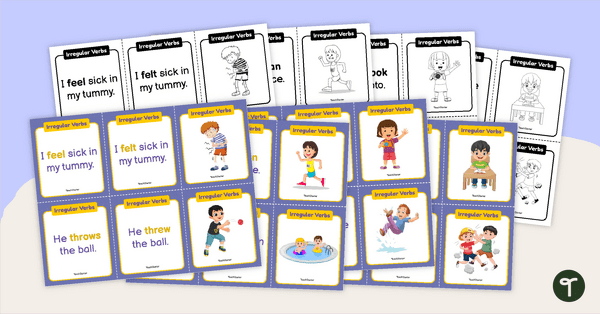
Present and Past Tense Irregular Verbs Matchup Cards
A set of 30 match-up cards to help students learn about simple present tense and simple past tense of irregular verbs.
- Free Plan
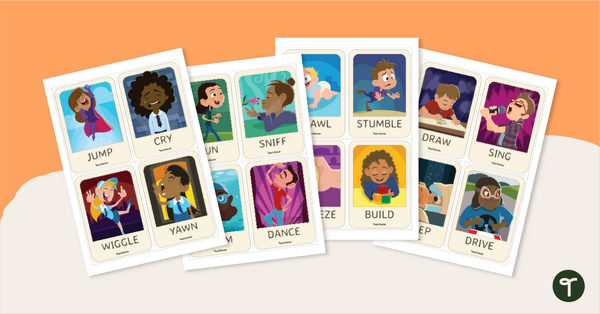
Verb Charades Active Game
Practise action verbs with this fun active charades game!
- Plus Plan
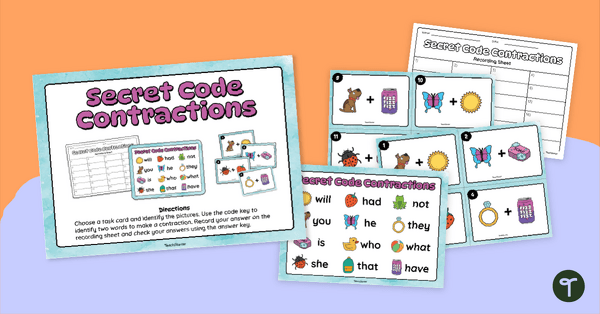
Secret Code Contractions Activity
Explore contractions and decode the secret code with this fun secret code activity.
- Free Plan
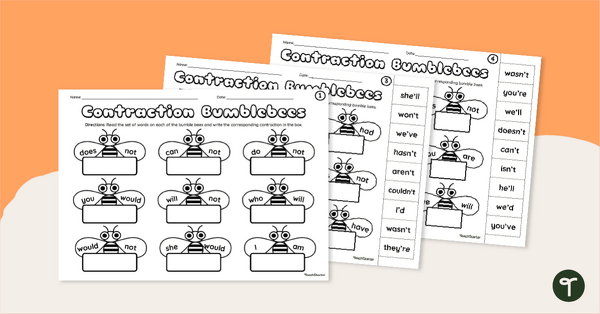
Bumblebee Contraction Worksheets
Practise creating contractions from two words using this set of cute bumblebee worksheets.
- Plus Plan
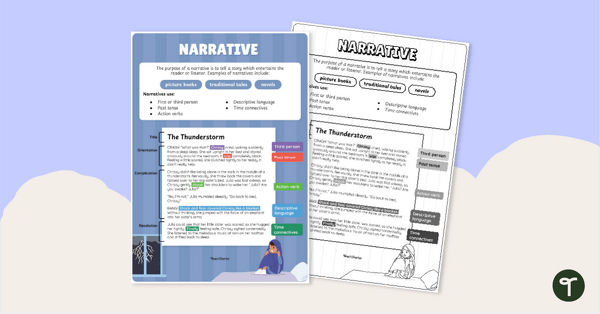
Narrative Text Type Poster With Annotations
Display this narrative text with annotations to help students identify the structure of a narrative.
- Plus Plan
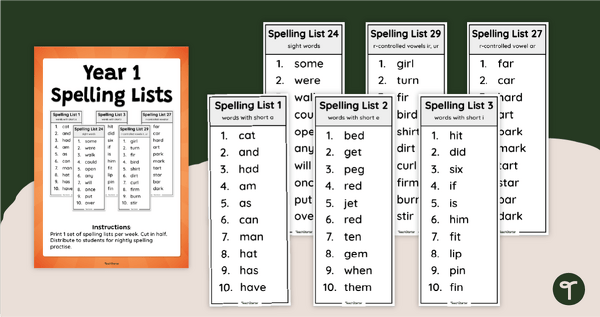
Year 1 Spelling Words - Weekly Lists
Create successful spellers with printable weekly spelling word lists for Year 1.
- Plus Plan
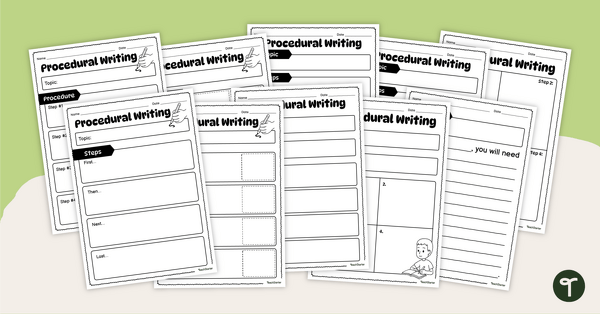
Procedural Writing Graphic Organisers
Get your students to write procedural texts with this set of 10 differentiated graphic organisers.
- Plus Plan
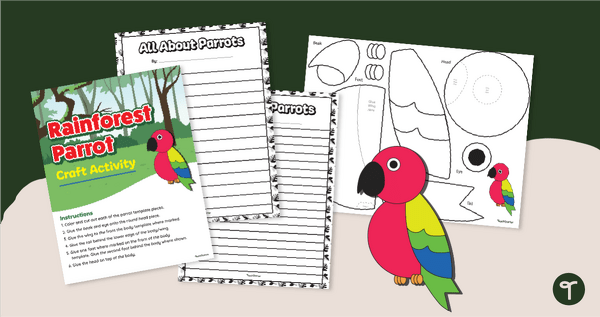
Rainforest Bird Craft & Writing Template
Pair a fun bird craft and informational writing to create a fun jungle-themed classroom display.
- Plus Plan
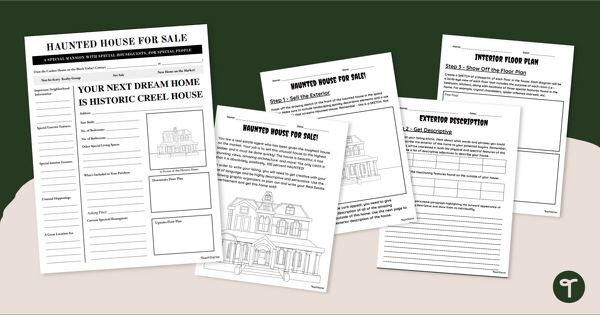
Haunted House for Sale - Creative Writing Activity
Use persuasive language and description writing to sell a haunted house with this exciting Halloween Haunted House Project!
- Plus Plan
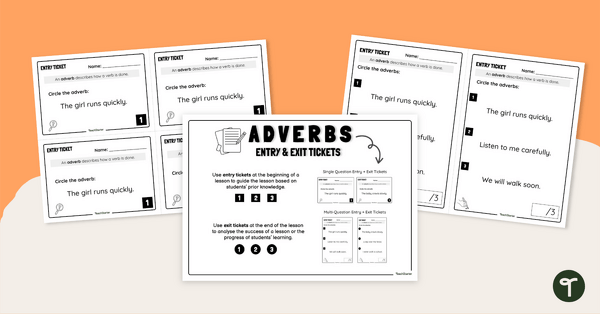
Adverb Entry and Exit Tickets (Differentiated)
Use these exit tickets to teach your students how to use adverbs to add detail in simple sentences!
- Plus Plan
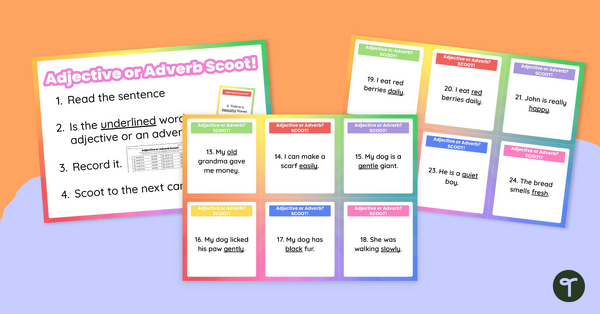
Adjective and Adverb Scoot Game
Scoot! This fun active learning game will have your students up and about on an adverb and adjective adventure around your classroom!
- Plus Plan
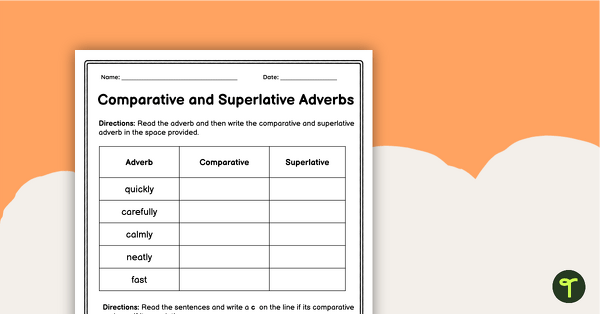
Comparative and Superlative Adverb Worksheet
Use this comparative and superlative adverbs worksheet to check students understanding of this grammar concept in your classroom
- Plus Plan
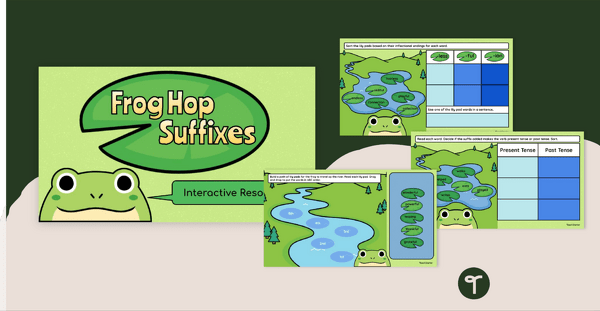
Frog Hop Suffixes - Interactive Grammar Review
Review knowledge of suffixes with an exciting frog-themed Google Slides Interactive review activity.
- Plus Plan
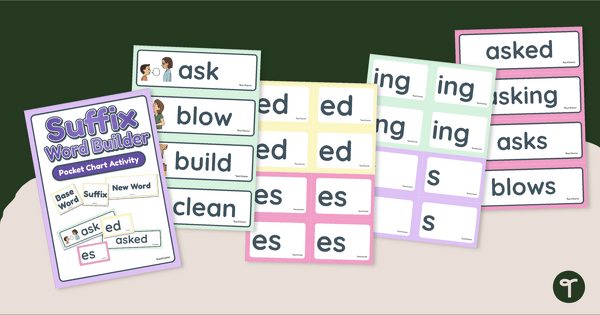
Suffix Word Building Activity
Build words using the suffixes -ed, -es, -s, and -ing with a printable word-building pocket chart card pack.
- Plus Plan

Un- and Dis- Prefixes Worksheet
Build vocabulary skills with a prefix worksheet featuring the prefixes Un- and Dis-.
- Plus Plan
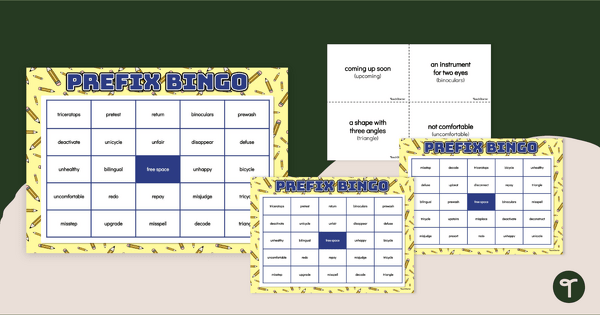
Prefix Bingo
Match prefix words to their definition by identifying the meaning of the prefix and the root word with a fun game of BINGO.
- Plus Plan
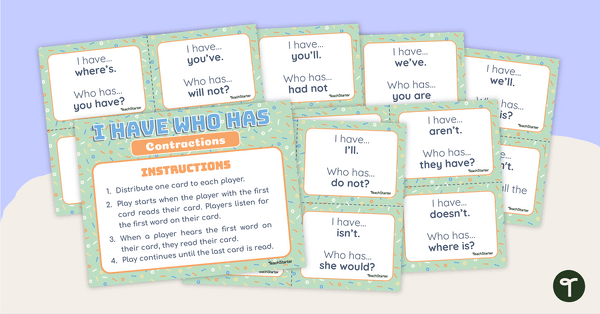
Contractions - I Have, Who Has? Card Game
Encourage correct spelling and usage of contractions in your English lessons with an engaging I Have, Who Has? Card game.
- Plus Plan
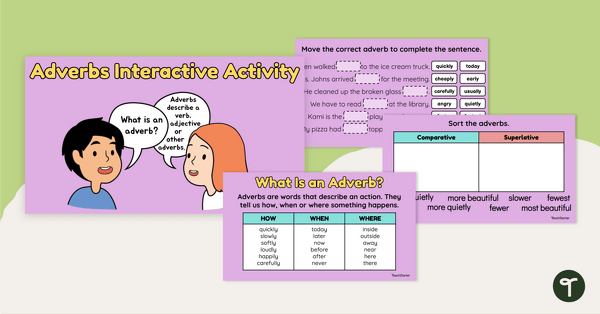
Adverbs Interactive Activity
Provide your students with engaging, interactive activities to help them improve their usage and identification of adverbs.
- Plus Plan
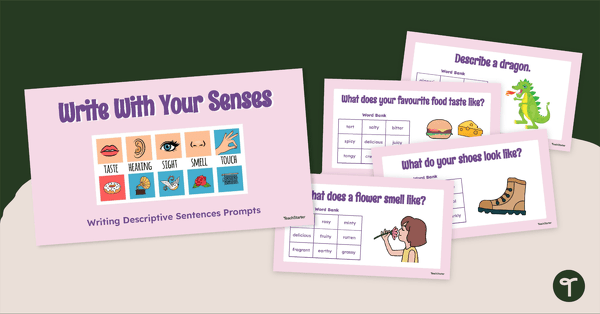
Write With Your Senses: Daily Descriptive Writing Prompts
Inspire your students to write descriptively using our 20 daily descriptive writing prompts slide deck and graphic organiser.
- Free Plan

Is/Are Subject Verb Agreement Worksheet
Provide students with subject-verb agreement practice with this worksheet focusing on using ‘is’ and ‘are’ correctly.
- Plus Plan
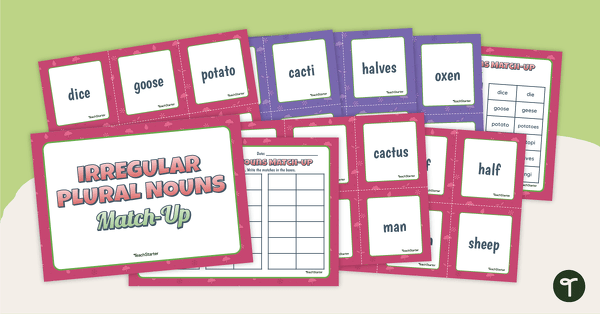
Irregular Plural Noun Match-Up
Practise using irregular plural nouns with an irregular plural noun matching activity.
- Writing Worksheets
- Writing Templates
- Writing Games
- Writing Posters
- Writing Teaching Presentations
- Writing Labels, Signs & Decorations
- Writing Word Walls
- Writing Projects
- Writing for Preschool/Kindergarten
- Writing for Foundation Year
- Writing for Year 1
- Writing for Year 2
- Writing for Year 3
- Writing for Year 4
- Writing for Year 5
- Writing for Year 6
- Writing for Year 7